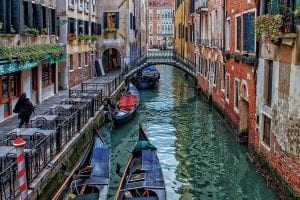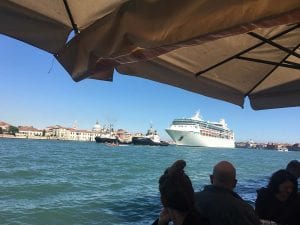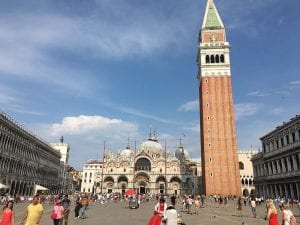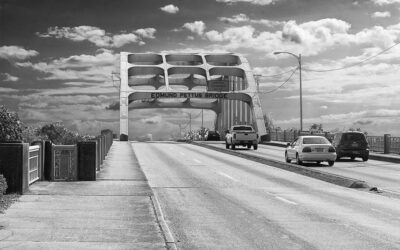Venice for tourists is still a magical experience, despite myths to the contrary

1. Tourists are packed into Venice, making the city uncomfortable.
This Venetian myth is true when sticking to the famous tourist spots in Venice. If travelers plan to visit only St. Mark’s Square, go to the Doge’s Palace, visit the church, and ascend the bell tower, tourists are hard to avoid. Anyone trying to take a photo of the Bridge of Sighs will have to fight for their spot.
However, Venice is a city where hoards of tourists can be avoided. In the early mornings and the evenings, one can wander along canals and ride on the waterbuses almost alone. At night most of the canals are empty, silent, and shimmer with lamplight.
Travel out of season. The difference between the middle of August and the middle of October is amazing. Plus, the hot weather out of season is very limited and hotels cost less.
 2. The canals stink.
2. The canals stink.
I have not ever had any problems with Venice and smelly canals. Yet, this Venetian myth prevails. Yes, there may be a small whiff of what may be rotting garbage, but for the most part, Venice is an amazingly clean city. With the number of tourists that pack the town, there is little litter and virtually no refuse floating in the canals.
Still, the Venetian lagoon is filled with birds, fish, and plenty of plant life. Algae is swept out of the lagoon by natural tides. The aqua-green water is clear and in some of the canals, one can see their sandy bottoms.
Simply stated, Venice does not stink.
3. The city is expensive
Not true. Once upon a time, Venice was only a day trip for many low-income visitors and this Venetian myth was true. Hotels were very expensive and the city at night was for only upscale tourists. Today, hotel rates are similar to other major cities in Europe. Plus when traveling in offseason, the rates plummet.
Airbnb and HomeAway and other vacation home rental sites have made Venice even more affordable. Daily rates run between Euros 100 and Euros 200 for one-bedroom units rented for shorter periods of time. Those staying for a full month can get good two-bedroom lodging for only about Euros 2,500 to Euros 3,200, with long-term discounts.
Though many think that the rise of vacation rentals has added to the tourist woes, these rentals have resuscitated the city by bringing more life to canals and narrow streets at night. Restaurants now have more business and supermarkets that were once hard to find can be found tucked into smaller spaces throughout Venice.
Lunch and dinner are about the same as in any other city in Europe. Expect to pay between $30 and $50 for a good lunch or dinner at a decent restaurant. That will include a starter, a first (pasta or risotto) or second (meat or fish) course, and plenty of water and wine.
4. Cruise ships are destroying Venice

That cruise-ship money helps keep the entire tourism infrastructure going that includes the waterbuses and infrastructure upkeep. Plus, having cruise passengers stay aboard ships keeps lodging costs down and means more space for those renting vacation homes and hotel rooms. And, Venice remains empty in the early mornings and at night.
5. Venice is sinking.
About 15-20 years ago, there was a flurry of fundraisers back in the US that raised money for “saving” Venice from rising seawater. This was a classic global warming situation, according to the big-money fundraisers. The Venetian balls held across the US raised millions in donations but did little to stop the rising waters.
However, professors from the University of Milan reportedly suggested that the factories ringing the Venitian Lagoon redirect wastewater. They determined that if factories began to pour their effluents into the Po River rather than the lagoon itself the problem would correct itself. The theory was that since the lagoon had only a small outlet to the sea it was keeping the incoming water from emptying into the Adriatic Sea on a daily basis.
Once the water was redirected to the Po River, the “sinking” stopped. Now, some of the water levels have actually receded and even the most alarming reports show only minor increases in sea level.
The lesson to be learned from this debunked Venetian myth is that every rise in sea level is not caused by global warming or climate change. Much is just because of poor industrial planning.
Tourists will see a unique place on the planet.

Tourists who visit will have a wonderful experience. And, anyone who has the time to spend an extended period of time in the city will have a chance to live life with no horns and car traffic. The normal urban sounds are traded in for the ringing church bells, the rumble of waterbuses docking, and occasional music from gondoliers.

Charlie Leocha is the President of Travelers United. He has been working in Washington, DC, for the past 14 years with Congress, the Department of Transportation, and industry stakeholders on travel issues. He was the first consumer representative to the Advisory Committee for Aviation Consumer Protections appointed by the Secretary of Transportation from 2012 through 2018.



